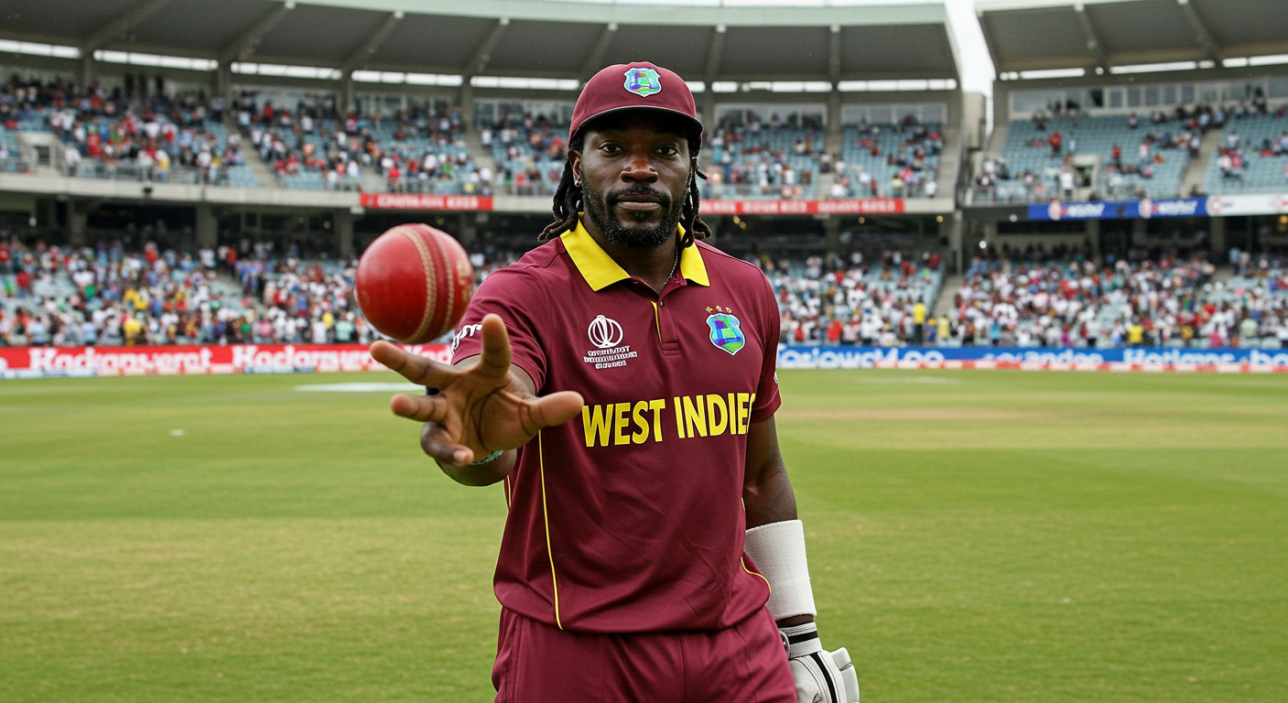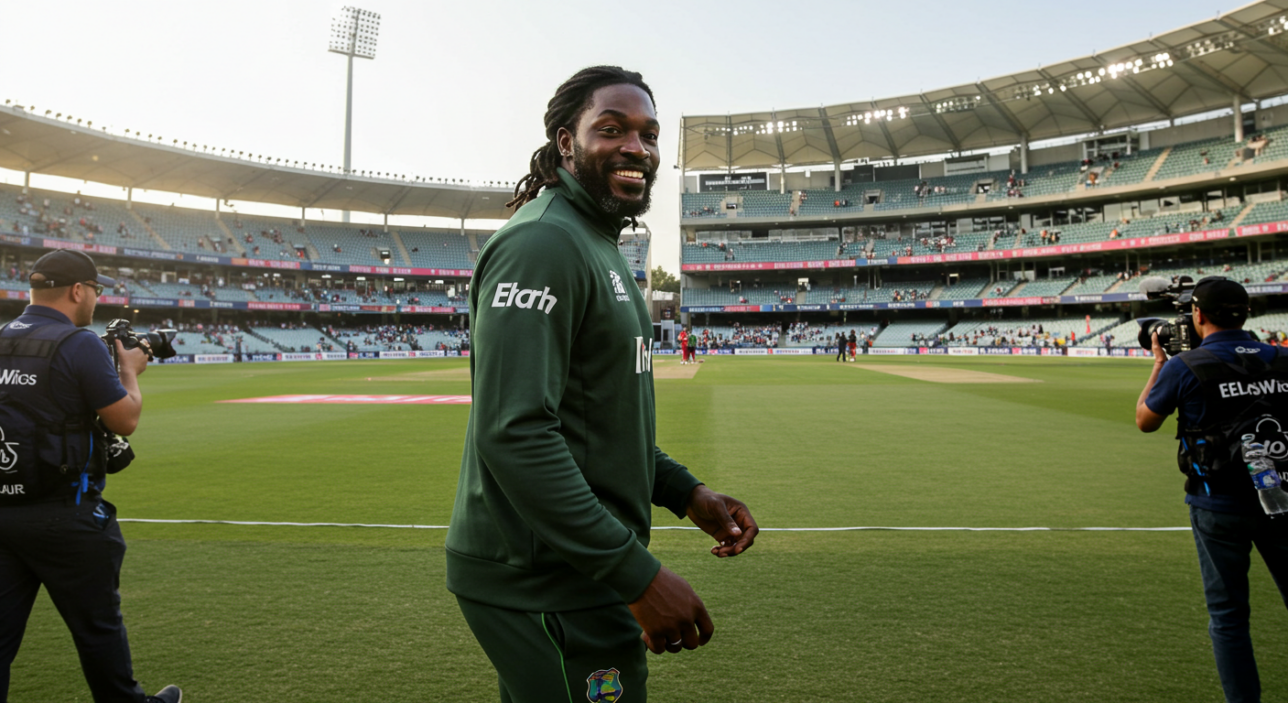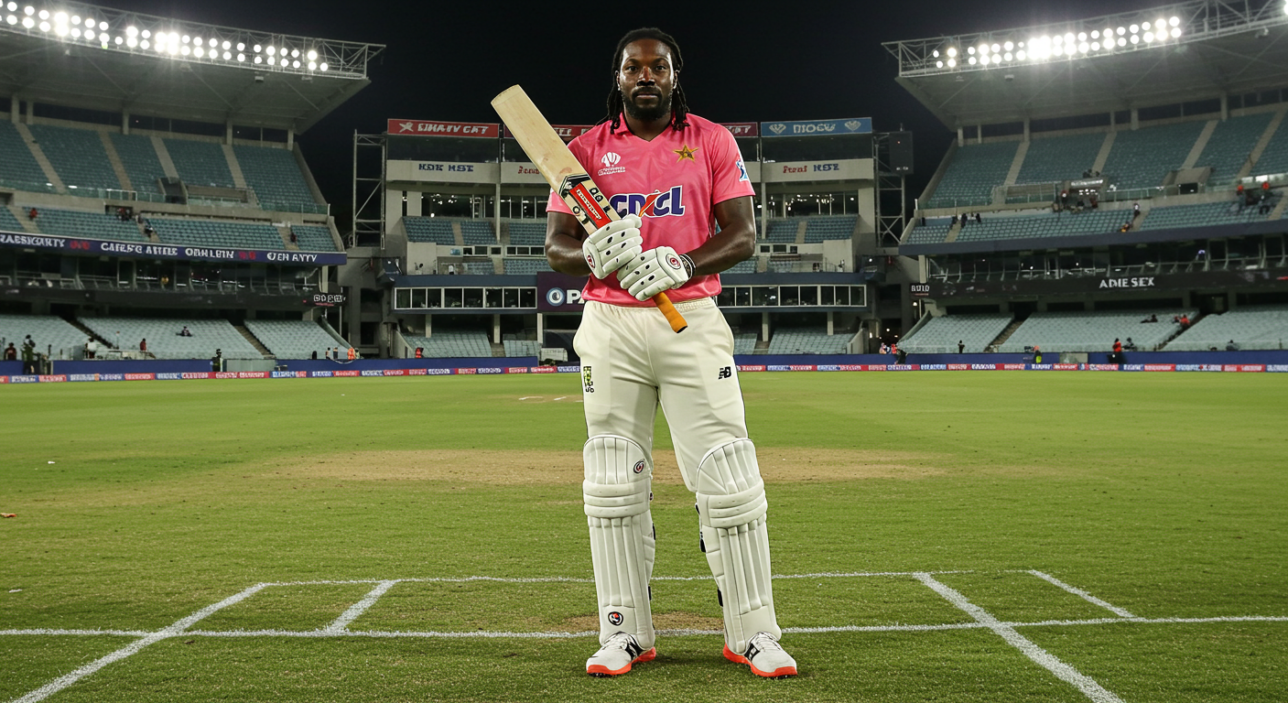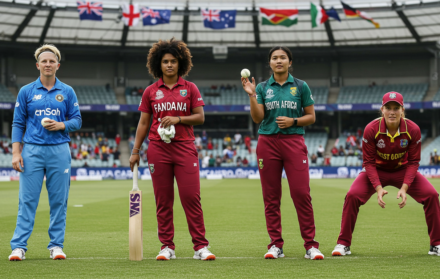
Chris Gayle: Universe Boss and the T20 Trailblazer
Chris Gayle didn’t just play cricket. He performed it—loudly, powerfully, and on his own terms. Across two decades, he became one of the most recognisable names in the sport, not just for what he did with the bat, but for the way he altered the very idea of what a cricketer could be. In a game often weighed down by tradition, Gayle represented freedom.
He is best known for his dominance in the T20 format, but his impact wasn’t limited to boundaries and strike rates. He was one of the first players to treat cricket as a global circuit, long before franchise loyalty became the norm. He moved between continents, formats, and dressing rooms with ease, always drawing a crowd, always setting the tone.
Yet beneath the swagger was a player of rare substance. A Test triple centurion. A World Cup hero. A record-holder in nearly every short-form league he played in. Gayle didn’t succeed because he fit into the systems around him—he succeeded by bending them to fit around him.
This article explores the arc of his career: from patient opener to six-hitting phenomenon, from Caribbean mainstay to international entertainer. Because for all the headlines, the sunglasses, and the celebrations, what Chris Gayle really changed was cricket’s relationship with power—and personality.
Test Roots: The Classic Game’s Loudest Opener

Before the gold chains, party shades and T20 fireworks, Chris Gayle was quietly building a formidable red-ball résumé. When he burst onto the Test scene in 2000, few expected the six-hitting phenom he would become. But Gayle wasn’t always fireworks. In the early days, he was grafting centuries on slow pitches, against proper attacks, with a technique built on timing, not brute force.
He scored over 7,000 runs in Tests—including two triple-centuries. His 333 against Sri Lanka in Galle was a lesson in control, stamina, and selective aggression. He faced 437 balls. Batted for nearly two days. And proved that beneath the swagger was a serious Test-match temperament.
What made Gayle’s long-format success fascinating was how deceptive it seemed. His loose limbs and languid movements masked deep concentration. His defence was underrated. His ability to shift gears—rare for natural hitters—meant he could hold up an end or hammer through a session.
Yet, despite the milestones, Gayle never looked fully at ease in the Test structure. The rigours of five-day cricket didn’t match his rhythm or his identity. And as the T20 era began to bloom, Gayle found a format that didn’t just suit him—it celebrated him.
He didn’t abandon Tests. He outgrew them.
The Reinvention: When T20 Found Its First Superstar
Chris Gayle didn’t stumble into T20 cricket—he saw it coming. Long before others had figured out what the format could become, Gayle was already building his career around it. While many senior players treated early T20s as exhibition matches, he treated them like auditions for the next phase of global cricket.
In 2011, after being overlooked by his home franchise in the IPL, Gayle was brought in as a replacement player for Royal Challengers Bangalore. He arrived with a point to prove. What followed was one of the most explosive individual runs in league cricket history. He scored two centuries in his first four games, finished the season with the Orange Cap, and turned RCB’s fortunes around almost single-handedly. It was clear: T20 had found its first true icon.
But his success wasn’t just built on brute strength. Gayle had a deep understanding of tempo. He was patient early, absorbed pressure, and waited for weak links in the attack. Then, with the field spread and bowlers searching for answers, he launched. His footwork was minimal. His bat swing was compact. But the results were monumental.
Over the next decade, he became the most in-demand player on the franchise circuit. West Indies may have been inconsistent, but wherever Gayle played—from Melbourne to Dhaka—he guaranteed ticket sales and highlight reels. More than once, teams paid top dollar for him even in poor form, because when he clicked, the spectacle was worth every penny.
By 2021, he held most of T20’s biggest records: highest individual score (175*), most centuries, most sixes, most matches. He wasn’t just playing in the format—he was defining its aesthetic. Gayle made T20 cricket louder, looser, and far more lucrative than anyone imagined.
Power With a Smile: Why It Worked for So Long

What made Chris Gayle’s dominance even more enduring was that it came wrapped in a unique kind of charisma. He didn’t sledge. He didn’t intimidate. He smiled. He danced. He hit sixes so nonchalantly it looked like batting practice. And it wasn’t forced—it was completely authentic.
This presentation of power made him unlike anyone else. Other hitters were aggressive. Gayle was relaxed. Others looked fired up. Gayle looked unbothered. He could hit a 110-metre six and follow it up by adjusting his shades mid-pitch. That ease wasn’t arrogance—it was confidence. And it disarmed both bowlers and audiences alike.
There’s also something to be said for how Gayle read conditions. He rarely slogged blindly. He took note of boundaries, pitch pace, wind direction, even field placements. His calculated approach was disguised as casual hitting, but it was method behind the mask.
It helped that he rarely chased the media. He didn’t need to. His bat did the marketing. When he called himself the “Universe Boss,” it wasn’t a claim—it felt like a title he’d earned. He didn’t chase captaincy, didn’t push for all-format fame, and rarely involved himself in cricket politics. He simply showed up, delivered entertainment, and left a bigger footprint than almost anyone else in the T20 era.
Even as younger players came through with higher strike rates and newer tricks, Gayle’s presence still mattered. Bowlers still gave him space. Audiences still waited for him to tee off. Because in T20’s short history, no one has ever matched Gayle for presence and impact combined.
Chris Gayle: The Brand and the Backlash
No cricketer marketed their own myth quite like Chris Gayle. “Universe Boss” was more than a nickname—it was a lifestyle, a brand, a punchline, and sometimes, a provocation. On Instagram he posed in hot tubs. In interviews he cracked jokes about his dominance. In post-match pressers he made headlines—some memorable, some regrettable. And not everyone laughed along.
His career off the field was marked by polarising moments. The most infamous came during the 2016 Big Bash League, when Gayle, live on air, flirted with a female reporter during a sideline interview, saying
“Don’t blush, baby.”
The fallout was swift. Sponsors distanced themselves. Analysts called him out. Gayle doubled down. It became a flashpoint in the debate over gender, professionalism, and personality in cricket’s modern era.
And yet, Gayle’s defenders—particularly in the Caribbean and among fellow players—pointed to double standards. He was flamboyant, yes, but so were others. He lacked filter, but rarely malice. His supporters argued that much of the criticism ignored the cultural space he came from, or failed to separate swagger from intent.
The truth is harder to simplify. Gayle thrived in a sport trying to balance commercial spectacle with inherited conservatism. He exposed that tension constantly. He wasn’t built for PR training. He didn’t play the diplomat. He played the enigma. And it made him easy to love, easy to market—and at times, easy to vilify.
But even at his most controversial, Gayle never lost the dressing room. Teammates respected his clarity. Coaches respected his experience. And opponents, regardless of opinion, respected the threat. Few players have drawn such consistent reactions, positive or negative, over such a long time.
Longevity Without Conformity

One of the most overlooked aspects of Chris Gayle’s career is just how long it lasted. He played international cricket for over two decades. He hit T20 hundreds at 22 and again at 42. His style—seemingly carefree, even casual—masked an exceptional level of physical and mental durability.
He didn’t follow typical fitness routines. He wasn’t seen sweating it out on off days or preaching high-performance diets. But he knew his body. He trained on his terms. He managed workload instinctively, often skipping bilateral series to stay fresh for tournaments that mattered most to him. And while critics framed that as disinterest, the results suggest it was simply smart resource management.
Most power hitters fade quickly. Timing goes. Reflexes slow. Risk appetite shrinks. But Gayle retained his threat well into his 40s. He wasn’t fast between wickets, but he didn’t need to be. He didn’t improvise much, but he didn’t have to. His game aged slowly, and when it finally did decline, he accepted it with little complaint.
He never chased a farewell tour. He didn’t manufacture legacy moments. He let the game fade out around him, the same way he often let the ball come to him—unhurried, deliberate, and on his terms.
In a sport increasingly scripted, Gayle never memorised the lines. He just played his role—loud, unforgettable, and entirely original.
More Than a Cricketer: A Cultural Force
Chris Gayle’s legacy cannot be contained by stats alone—though the numbers are absurd. More than 14,000 T20 runs. Over 1,000 sixes. A T20 century in 30 balls. But what he leaves behind isn’t just data. It’s an imprint on the sport’s identity.
For many fans, particularly across the Caribbean, Gayle wasn’t just a cricketer. He was a symbol of freedom in a game that too often asked for conformity. He played with gold chains, with music in the background, with joy on his face. He didn’t shrink himself to fit the model of how a cricketer should behave. Instead, he expanded the idea of what a cricketer could be.
And that mattered. To children watching in Jamaica. To aspiring players in Trinidad. To fans in Melbourne, Bangalore, Dhaka and beyond. He didn’t speak much about race or class or structure, but his presence was a challenge to all three. He made room for other personalities in a sport that still too often prizes polish over authenticity.
He didn’t win every battle. He wasn’t always consistent. But when he was in rhythm, you didn’t look away. That’s star power—and cricket has never had many like him.
Conclusion: The Game Will Never See Another Like Him

Cricket has always celebrated its purists—those who batted with discipline, who upheld the tradition, who played the “right way.” Chris Gayle was never one of them. And that’s precisely why he mattered.
He brought something different. A looseness. A largeness. A kind of joy that made cricket feel less like homework and more like a block party. He wasn’t built for subtlety, but he was smarter than he let on. He wasn’t a technician, but he knew angles, wind, and margins better than most. And he wasn’t trying to be anyone else.
He played with confidence, carried it into every franchise, and turned it into a global career that reshaped the sport’s economics. Before Gayle, there were cricketers. After Gayle, there were brands, freelancers, icons. He changed what was possible—not just on the field, but around it.
Some will remember the sixes. Others the celebrations. Some will dwell on the controversies. But all of it—every strike, smile, and stumble—was unmistakably him.
He may not have redefined greatness in the classical sense. But he expanded its definition, made room in it for his own version. Loud. Loyal. Lethal.
Chris Gayle didn’t just play T20 cricket.
He made it look like his own invention.




